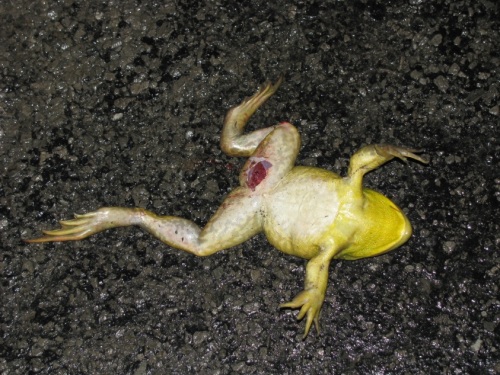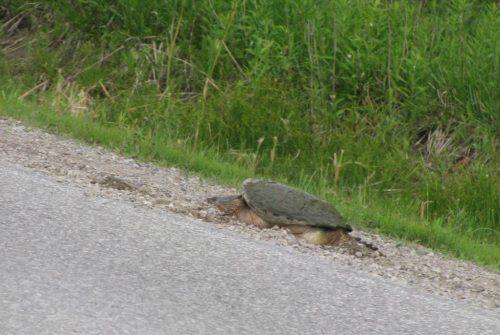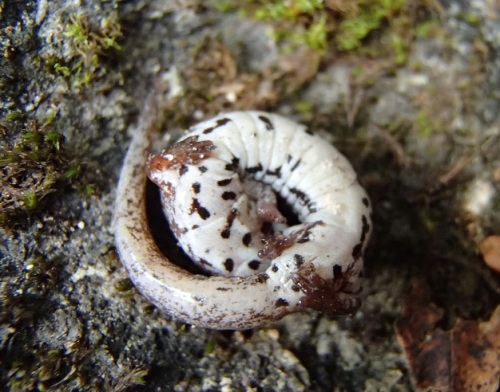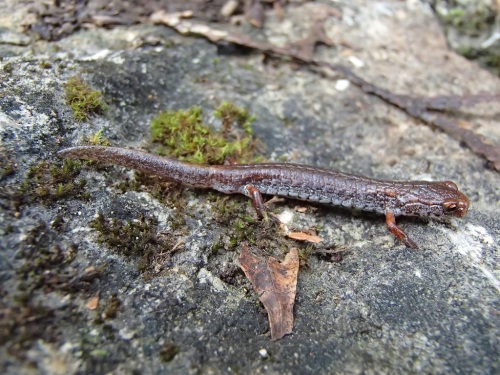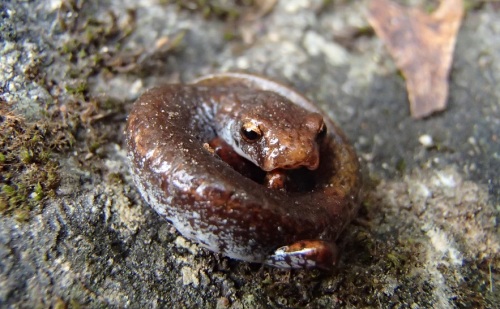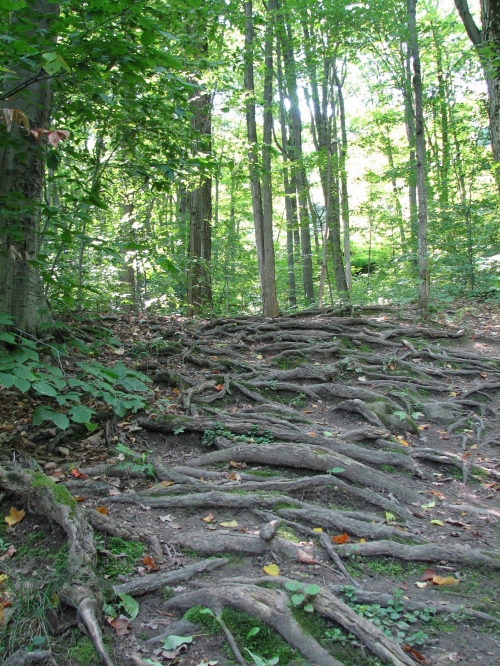Written by: Richard Baxter, Terrestrial Planning Ecologist
Roads endanger wildlife and human life. Wildlife collisions, especially involving larger animals, damage our vehicles, and can also injure and sometimes kill us. Since wildlife corridors are cut off by impending urban sprawl and criss-crossing networks of cement and pavement, wildlife have no other choice but to make use of our highways. Driving to work in the morning now means we share the road with turtles, raccoons, and deer. Not only are wildlife collisions occasionally fatal, but they are also costly. Every year, nearly 40 million dollars in property damages from 14,000 wildlife collisions happens in Ontario alone. How do we balance a burgeoning human population, and subsequent development, with environmental impacts? How do we reduce costs to the environment, damage to property, and avoidable mortality? The answer to these questions is ‘Road Ecology’–an evolving field that studies the interactions of wildlife and the environment with our roads.
Previously in Ontario, little thought was given to environmental or wildlife impacts when designing and building roads. However, as both human populations and the knowledge of our impacts increase, so do our opportunities for better road design. This has led to research into low-cost, but highly effective solutions to mitigate impacts to and from wildlife. A variety of strategies have been developed that can be employed, depending on a given situation. Each situation will have a unique set of circumstances that must be considered: What wildlife species are most abundant in a location? Are there wetlands surrounding the road? Is there an abundant local deer population frequently crossing the road?
Roads can be attractive to certain wildlife species. Snapping turtles often use gravel road shoulders to nest, and snakes are attracted to warm surfaces for regulation of body temperature. On the other hand, roads cause avoidance effects in some wildlife; some forest birds will not cross large openings, and a forest fragmented by roads deeply impacts their living space. Many of us have seen dead turtles and snakes on roads, and it is well documented that forest birds are less abundant where woodlots have been fragmented and reduced in size, often partly due to the effects of roads.
The building and use of roads leads to fragmentation of natural areas, interruption of wildlife migratory routes, and direct mortality to wildlife though collisions with vehicles. Depending on the species of wildlife involved and their life history characteristics, road mortality can have major impacts on local populations: especially vulnerable populations are the herptiles like turtles, snakes, frogs and salamanders. Since development significantly impacts migrations of local wildlife, wildlife resort to crossing our roadways, and can occasionally become an unwitting cause of human mortality; for example when collisions occur with larger animals like deer, or when drivers lose control reacting to an animal on the road.
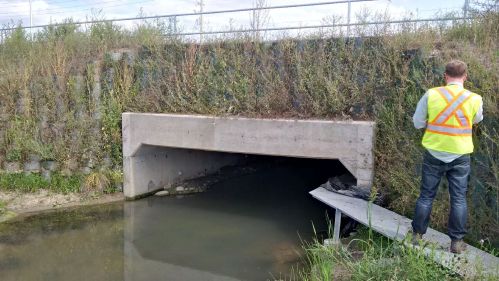
Within Halton Region and the GTA, the pace of development has been high in recent years, with several residential and industrial developments springing up and some major road extensions and reroutes being planned and constructed. This has spurred cooperation between agencies (local Municipal and Regional planning authorities, Conservation Authorities and the Ontario Ministry of Natural Resources and Forestry) to incorporate road design elements that are more wildlife friendly in priority areas. Indeed, several of these local agencies are actively engaged in road ecology studies and development of strategies to reduce impacts. Local planning policy updates have been implemented in Halton Region, that include the development of a Natural Heritage System (under Regional Official Plan Amendment 38) with an emphasis on maintaining connectivity and linkages in the landscape, and the Town of Oakville is developing a Road Ecology Strategy. Conservation Halton is also actively collecting data on various culverts and bridges in the watershed and how they relate to wildlife crossing.
Depending on a given sites specifications, we can recommend several low-cost but effective methods to mitigate wildlife collisions, and reduce environmental impacts. These can include signage to alert motorists to vulnerable species on certain stretches of road; wildlife fencing (both to exclude wildlife from dangerous areas and to guide wildlife to a safer crossing site); and specially designed culverts and bridges; these mitigations are often applied in combination. In certain cases a road can be seasonally closed to allow for wildlife migrations. A local example of this is King Road in Burlington, which has been annually closed to traffic in the spring since 2012 to allow the Endangered Jefferson’s Salamander to complete its migration to breeding ponds. Though the design and implementation of these mitigations is a relatively new thing in Ontario, they have been employed in other areas for several years, for example Banff, Alberta and several European countries.
You can see a recent, and local example of specially designed culverts and wildlife exclusion fencing in our watershed off of Tremaine Road and Main Street on the west side of Milton. The wildlife fencing guides herptiles and smaller mammals like raccoons away from potential high traffic zones and into crossing culverts, and larger culverts with guiding walls and dry banks are present to provide passageways for bigger wildlife species like deer and coyotes. In fact, we observed raccoon droppings in a crossing culvert during a recent site inspection. This exciting observation shows us that animals are already using the wildlife culverts—even while the culverts and fencing are still under construction. Future study and monitoring of these mitigation efforts will be important in determining their effectiveness. Our hope is that resourceful and easy to enact solutions like special culverts and fencing will protect our natural heritage, and balance the needs of wildlife and us.

